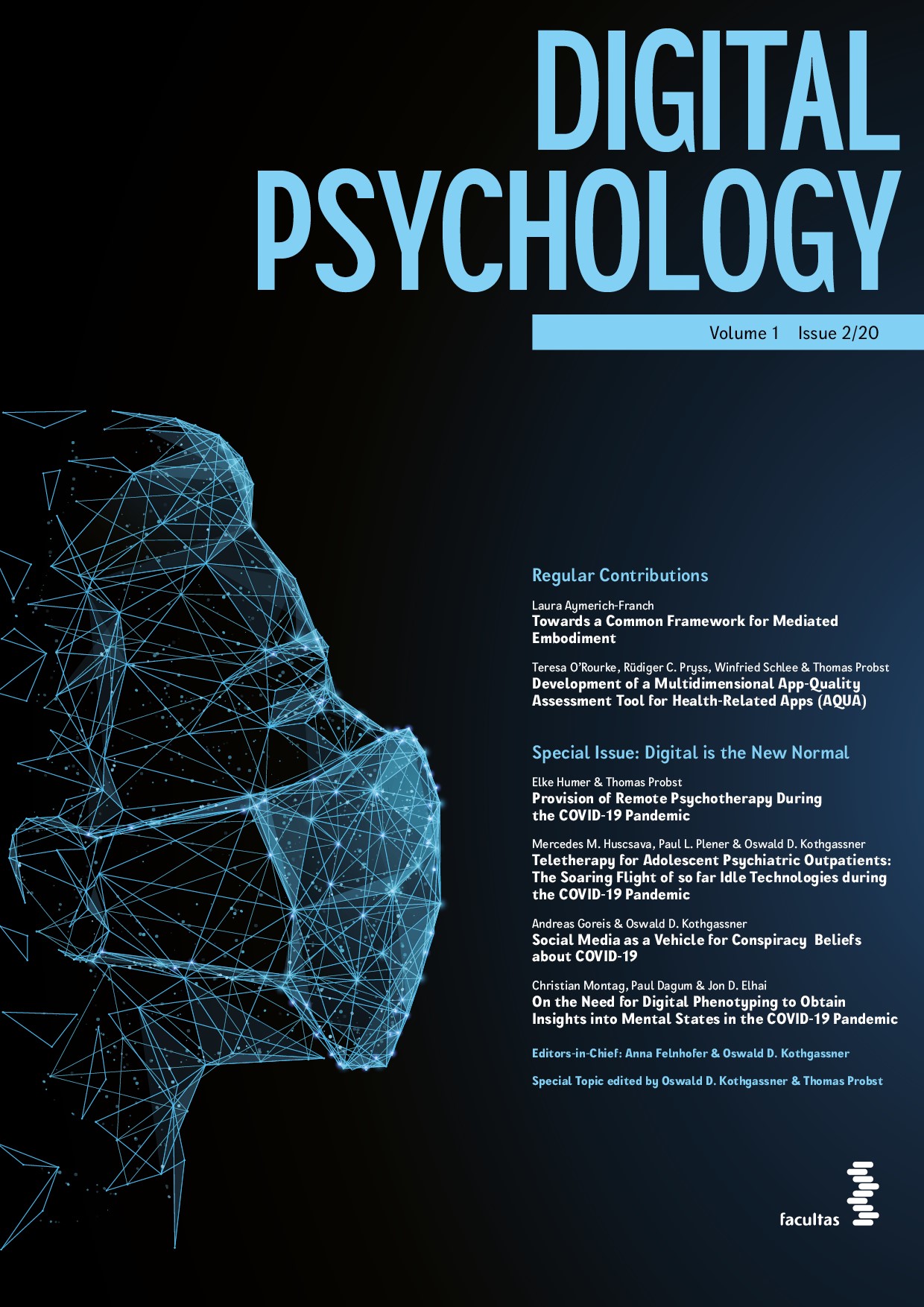Towards a Common Framework for Mediated Embodiment
Main Article Content
Article Sidebar
Abstract
Mediated embodiment (ME) is the technologically generated illusion of substituting a person’s body with an avatar body. Virtual reality is the most representative technology of ME. However, other forms of embodiment are emerging and need to be examined. The inclusion of all ME technologies under a common paradigm would largely facilitate their study. Here, I develop a unified conceptual framework of ME and integrate robot embodiment as part of the phenomenon. I first describe the central component of ME: avatars. I extend the concept of avatar used in virtual reality to other forms of ME. I then outline the minimum conditions necessary to induce the embodiment illusion as well as the technical principles used to create this illusion. Next, I suggest that ME technologies can be regarded as tools that increase human capabilities in four directions: embodiment of a new self, expansion of traveling capabilities, expansion of body capabilities, and the reach of immortality. I connect the principal research conducted in the field to these categories and suggest potential research directions to promote the positive applied uses of ME. I conclude with the importance to also address ethical issues related to this phenomenon.
How to Cite
Downloads
Article Details
mediated embodiment, virtual reality, robots, robot embodiment, avatar, body-ownership.

